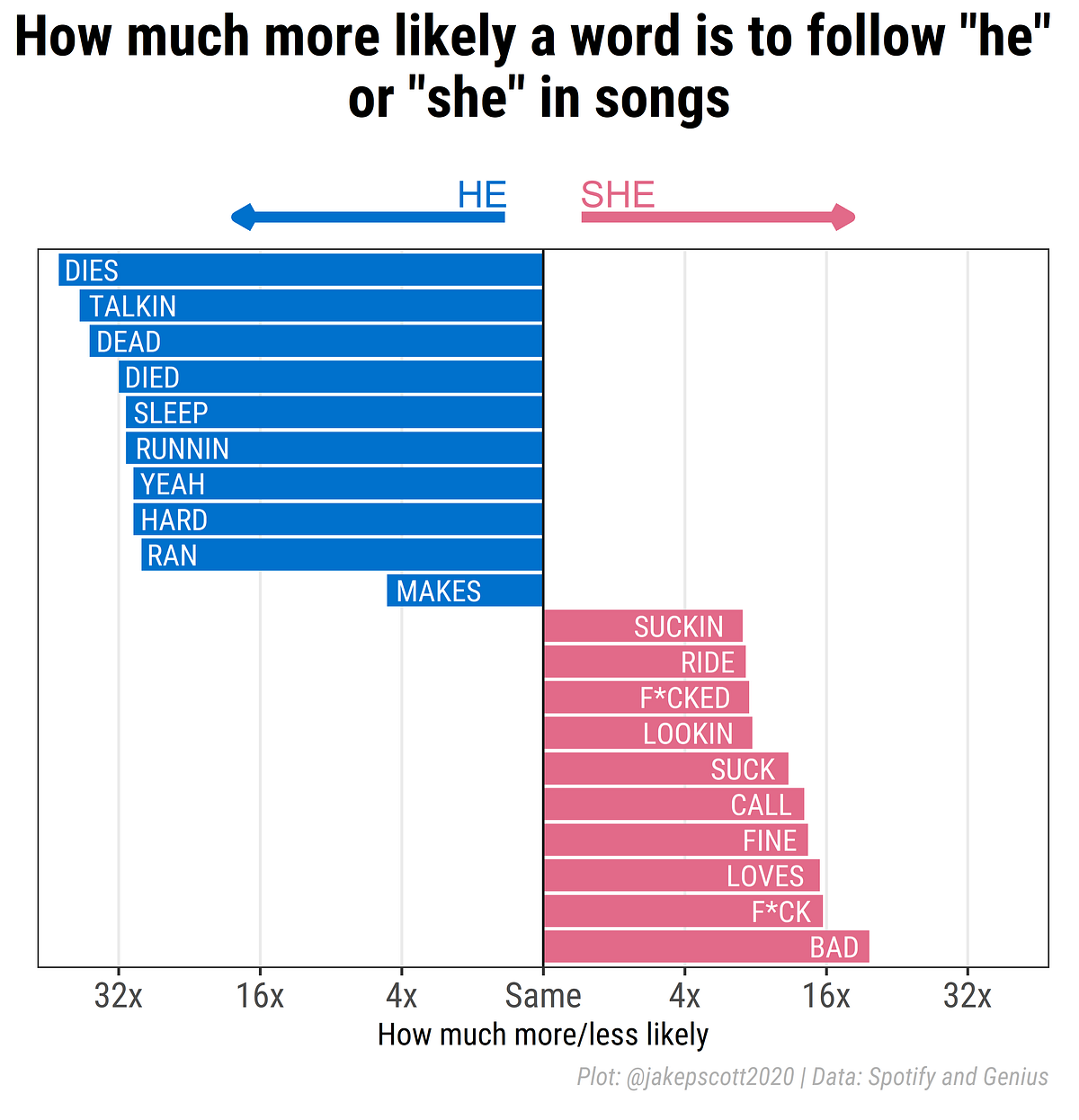He dies. She fine. He runnin’. She suckin’.
Men and women are portrayed very differently in entertainment. The way they speak, how they are portrayed, and how they interact with each other are all informed by gender.
A striking example of this has to do with the big screen. Back in 2017, Julia Silge, Russell Goldenberg, Amber Thomas, and Hanah Anderson broke down stage directions by gender for over 2,000 Hollywood scripts. They found that women are far more likely to be instructed to snuggle, giggle, and squeal, whereas men are far more likely to be told to strap, gallop, and howl.
Such discrepancies, in stage directions and beyond, shape views both consciously and unconsciously, often reinforcing stereotypes and existing power structures. Given the significance of this implication, I decided to conduct a similar analysis looking at song lyrics.
To do so, I used the Spotify top 200 list, which contains the top 200 songs by number of streams each day going back to 2017. I obtained lyrics for over 90 percent of these songs using the Genius API, and I manually obtained the gender for over 95 percent of the artists (around 3 percent were bands with both men and women).
The first aspect of songs I wanted to explore was representation in terms of the relative use of “she” and “he”. I was initially surprised to see that the word “she” is used considerably more often than “he.”
#lyrics #gender #data-visualization #rstats #spotify #data visualization
